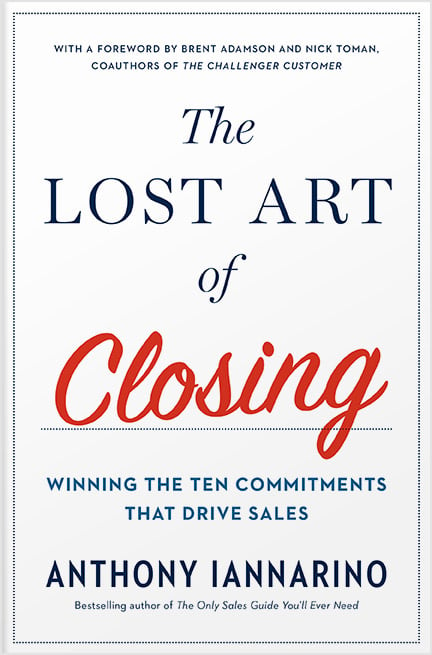The Gist:
- The legacy approaches to sales are designed to overcome objections.
- The legacy solution approach to B2B sales added a level of proof, to provide clients with the confidence necessary to adopt their solution.
- The modern approach requires the ability to resolve difficult concerns that prevent clients from moving forward.
Some of the challenges of selling effectively grow more difficult over time—a natural outcome of greater complexity and its impact on our contacts and clients. However, viewing those challenges using inherited legacy models only makes things worse.
What was once called a “complex sale,” for example, now seems rather simple and straightforward—what felt like brain surgery 50 years ago feels more like clipping a hangnail today. In modern B2B contexts, a complex sale is one in which the client is required to make a decision they make infrequently, with potential negative consequences for making a poor decision. To pile on the difficulty, when your client’s environment creates uncertainty there is a perception of greater risk, creating concerns that, left unresolved, prevent a decision to change. The legacy approach to handling objections is inadequate to resolve these concerns for our clients.

From Legacy to Modern Sales Approaches Parts 1-5:
- Part 1 | Approaches
- Part 2 | The Starting Question
- Part 3 | Information
- Part 4 | Discovery
- Part 5 | Stakeholders
Legacy Laggard: Overcoming Objections
The legacy laggard approach to sales does not recognize the difference between an objection and a concern, an oversight that has very real consequences for both the salesperson and their prospective client. The following quote is from General Motors’ textbook Selling Chevrolets: A Book of General Information for Chevrolet Retail Salesmen, published circa 1926.
- Prospect: “My old car is worth at least $100.00 more than you offer me.”
- Salesman: “Your old car, Mr. Prospect, has given you a lot of pleasure and service. You are thoroughly familiar with its condition, and I can understand how it may appear to you to be worth more. But the price of a used car, just like anything else, is determined by the demand for it. It is impossible to offer you more for your old car, much as we would like to do so, but we can offer you many quality features that cannot be duplicated in any other car at or near the price of a new Chevrolet.” (Show him features and ask for the order–often.)
There is no doubt that this language was effective at the time, especially since there was no internet or even Kelley Blue Book in 1926. But if you look closely, the salesperson logically addressed the objection without actually addressing the prospect’s real concern (whether he is getting a fair price for his car). When these approaches failed, it is because the concern was left unaddressed. The transactional approach is found in the last line of the quote: “ask for the order–often.”


Legacy Solution: Overcoming Objections + Proof
The legacy solution approach to overcoming objections was a huge improvement for B2B salespeople, especially those embarking on long-term projects with their prospective clients. When the sale isn’t transactional and the decision is complex, clients tend to voice more objections (some of which are really concerns, even if they are not treated that way.)
As customized solutions became more important to the client, though, many decision-makers and decision-shapers wanted more: even if you “overcame” an objection, your client might still ask you to provide them with some proof. The greater importance of decisions and the increased risks that followed a bad decision required something more than an explanation.
Generally, the new approach to overcoming objections would include acknowledging the objection, asking questions to ensure you understand the objection, addressing or “overcoming” the objection, and ensuring your client understands your response. Approaches like this were important innovations that allowed the salesperson to help their clients move forward when they succeeded in making their case.


Modern: Resolving Concerns and Creating Certainty
It is important to recognize the difference between an objection and a concern. Mistaking one for the other makes selling in a complex environment more difficult. One way to define an objection is as a statement that protects the prospective client from having to state their concern.
Here is an objection you are certain to hear when you make a prospecting phone call: “Can you email me some information?” The prospect’s real concern is that meeting with you would be a waste of their time. Since you are already well aware of that concern, there is no reason to acknowledge the objection at all. Fortunately, this is a simple objection with a concern that is easy to resolve, namely by demonstrating the value of your meeting for your prospective client. You and your prospective client are both better off if you resolve that concern and create a sense of certainty.
Here are a couple more difficult concerns and their masking objections. They stem from the modern environment we have been describing in this series of posts.
- Imagine you are working with a stakeholder and are certain that the nature of the change you are exploring is going to require consensus from their team. You ask the stakeholder who else you will need to bring into the conversation, only to be told, “I am going to be making the decision.” Even if your contact could make that decision, it wouldn’t be a good idea to move forward without their team’s buy-in. In terms of the underlying concern, perhaps your contact is worried about people who are opposed to what they want shutting down their potential initiative, or maybe they don’t want anyone to modify it in some way. It’s also possible that you are column fodder and that the only reason they are meeting with you is to prevent you from getting a stronghold, something that will prevent them from choosing the partner they want.
- You presented and provided your client with a proposal and pricing. Your main contact calls you and says, “We love your work, but your price is eight percent higher than your competitor’s. You’re going to need to sharpen your pencil.” The eight percent gap is how you deliver the greater value, as well as how you keep taking clients away from your low-value competitors. Your client’s concern may be any one of the following: 1) someone is going to ask them why they spent more than the lowest price, 2) you are trying to take advantage of them because they don’t buy what you sell often, 3) they are unsure whether that additional investment is necessary, or 4) they are simply asking because they are trying to do right by their company.
The modern approach to sales recognizes that you are helping your client to change and that the prospect of change generates genuine concerns. We must treat objections as if they were the real concerns they are masking, approaching the deal as a change management problem. The modern challenges of compelling change, building consensus, creating value for your clients, and creating certainty require more expertise than the legacy laggard and legacy solution approaches are equipped to provide.
Read the next chapter in the series: Part 7 | Who Leads
Do Good Work:
- Recognize the difference between an objection and a concern.
- Start to address the concerns that, if left unresolved, would prevent your client from taking the actions that would improve their results.
- Develop the concepts and skills to help your clients with change management.

Essential Reading!
Get my 2nd book: The Lost Art of Closing
"In The Lost Art of Closing, Anthony proves that the final commitment can actually be one of the easiest parts of the sales process—if you’ve set it up properly with other commitments that have to happen long before the close. The key is to lead customers through a series of necessary steps designed to prevent a purchase stall."
Buy Now










